Patterns from the crossed loops. The crossed loops sometimes are combined with the patterns consisting of plaits and the small crossed loops which compensate roughnesses of plaits. Advantage of the crossed loops is that they are carried out quicker, than plaits.
The description of performance of the crossed loops look here.
Interlacing Lomannaya asparagus. In this pattern of knitting decussations to the right and to the left, executed against chulochny knitting are used. Thus upper loops are more relief as they are removed neprovyazanny in back ranks.
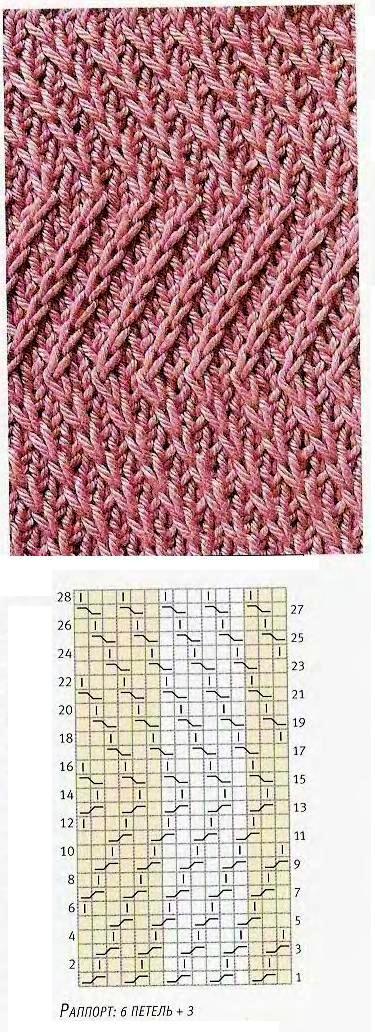
The small grid When knitting from 10 loops this pattern forms the panel of the crossing rhombuses.
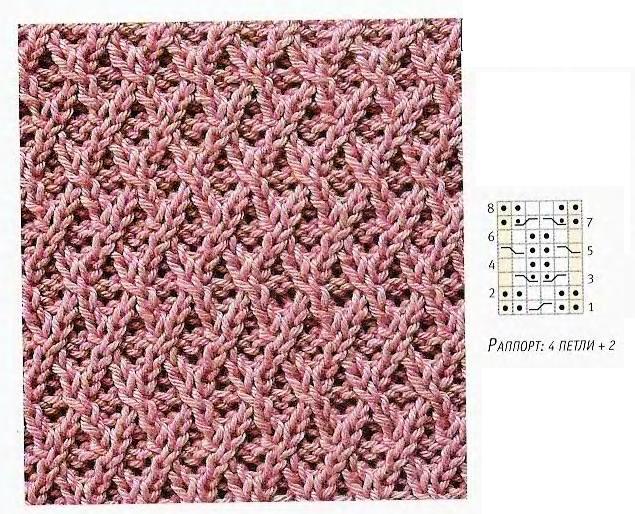
Small braid. Use this pattern as interesting alternative to elastic band; simply plan bigger number of back loops between braids that it corresponded to your design.
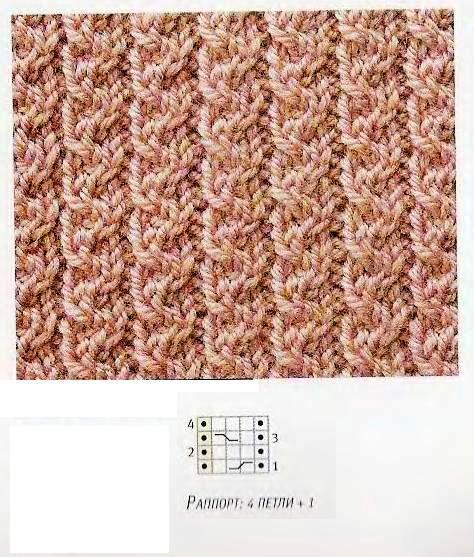
Elastic band with branches. This decorative elastic band not really stretches therefore it can be used as continuous pattern. If you want that all branches looked in one party as rapport use the first or last eight loops of the scheme.
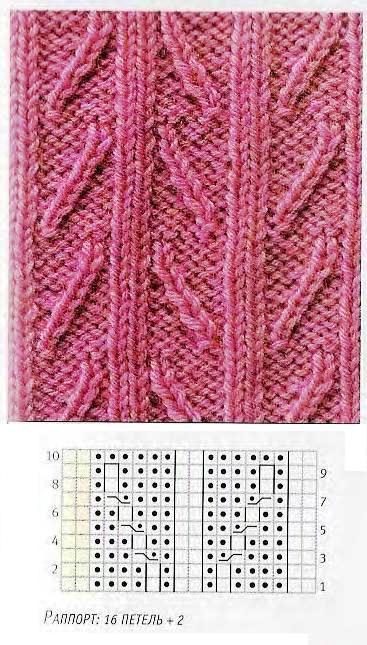
Blocks from hand bells. Simply cross loops at the top of each block for receiving this charming pattern.
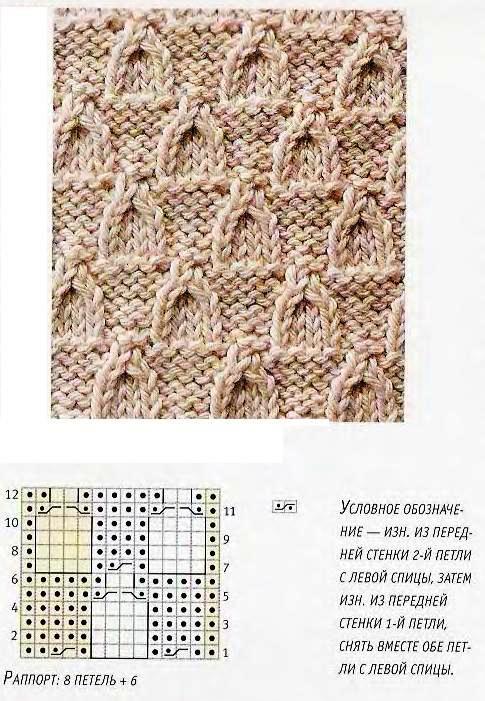
Wave and decussation. Curved knitting gives the chance to gain tiny lacing effect.
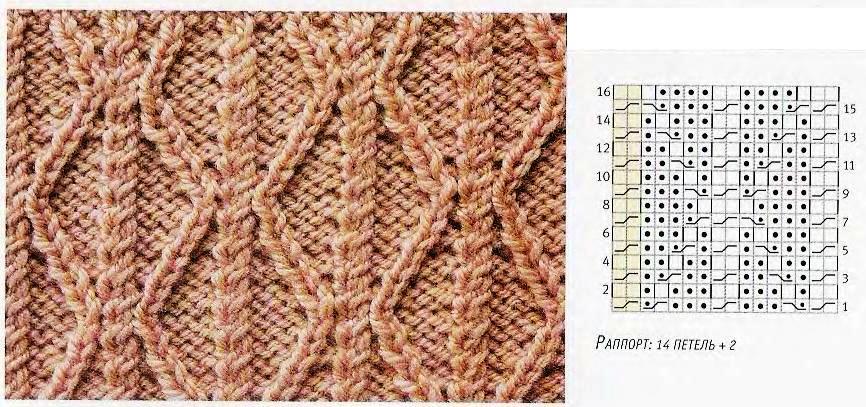
Imitation of plait. This attractive sample of knitting is much simpler, than looks. In it decussations from three loops are used.
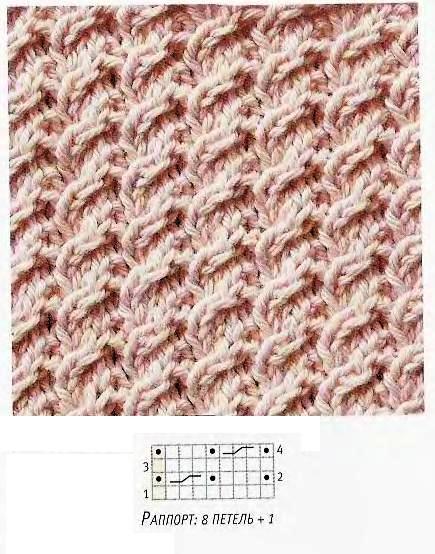
Imitation of plait 2. This sample allows to create effect of Arran pattern in miniature.
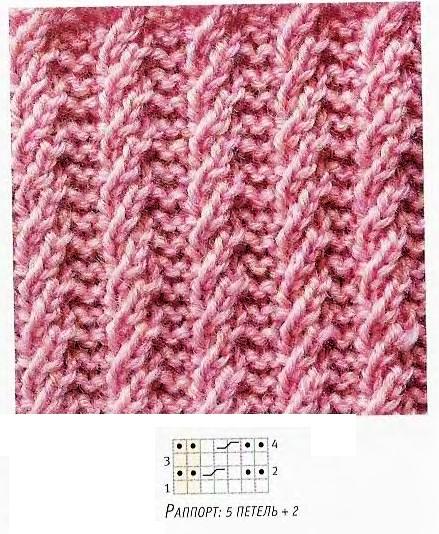
Decussation from two loops. Simple decussations of loops from upper side and in provyazanny back loops ranks of reverse side give originality to this simple knitting.
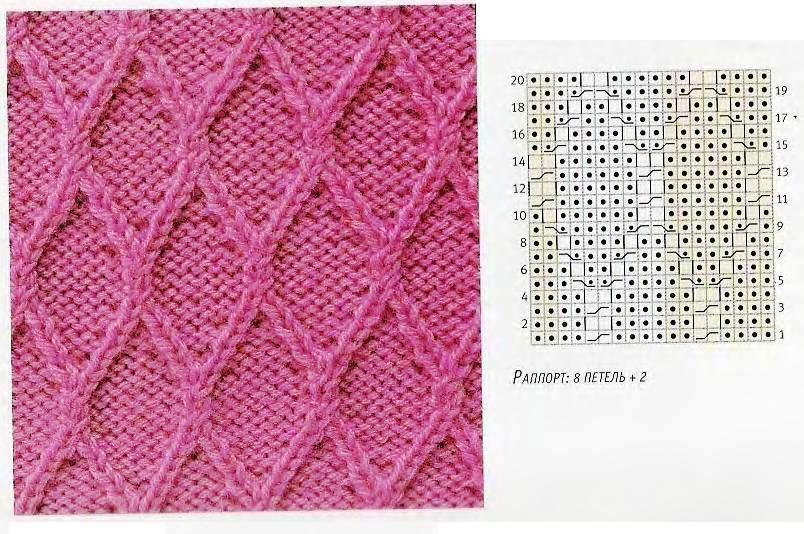
Lattice with the removed loops. For lattice with decussation from three loops knit the first and second ranks two times, then with third on the tenth ranks. Two times execute ranks 11 and 12, then ranks 13 and 20, repeating them in the 24th row. For wider lattice repeat rapport from 10 loops, carrying out two additional back loops between decussations in the first row, then four times moving loops for creation of outline of rhombus.
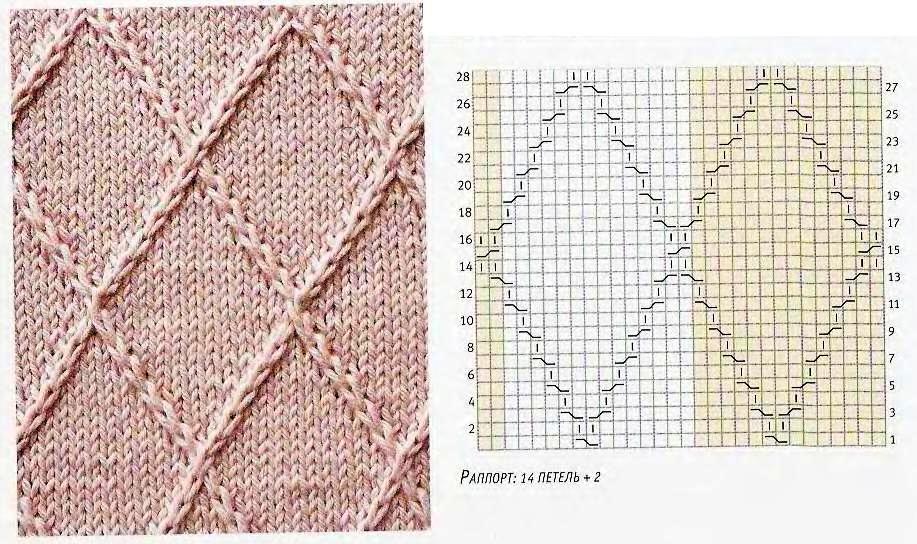
The overwound elastic band. The crossing of two loops in each row allows to receive dense elastic band with accurate outlines.
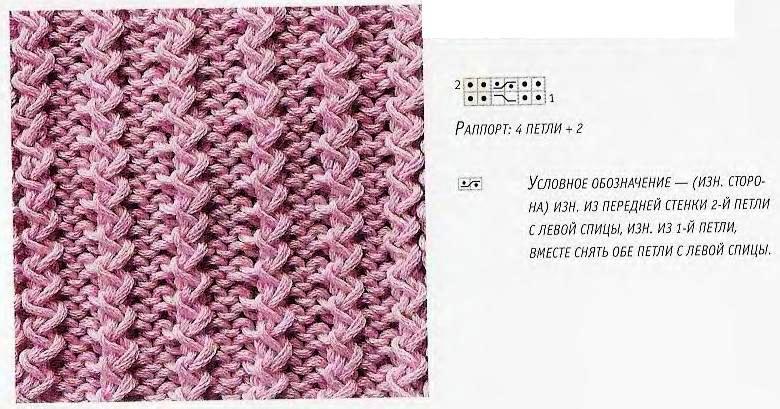
Zigzags. Zigzags chulochny knitting are outlined by the crossed loops for giving of additional clearness of the textured sample surface.
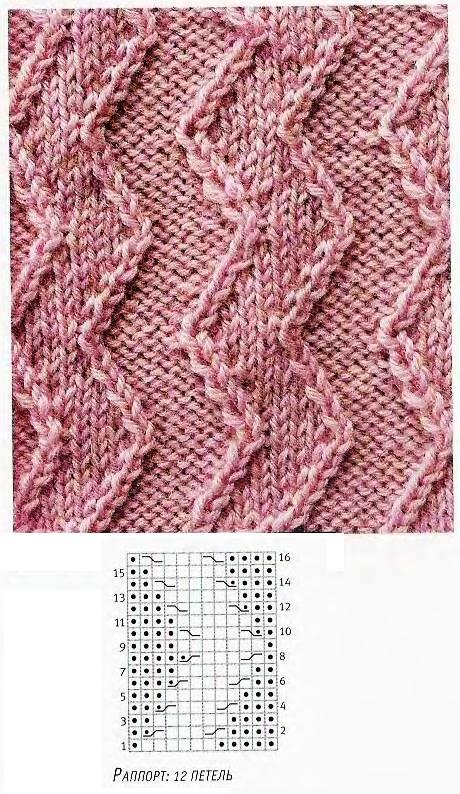
The turned pyramids. Instead of crossing of loops from seamy side of the turned pyramids plaits can be executed, however the crossing of loops allows to provide equal structure of knitted cloth.
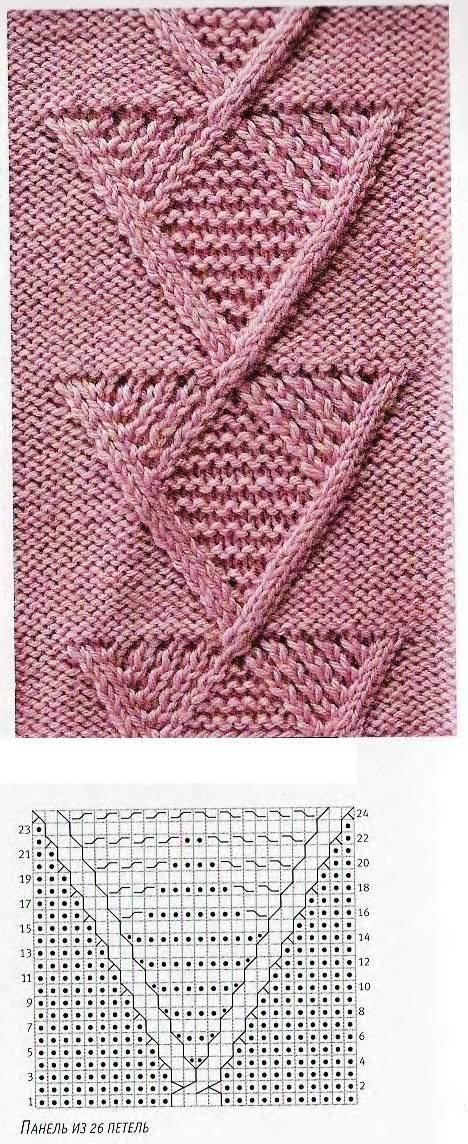
Diagonals from the removed loops. Removal of the moved loops in the previous row extends them and gives additional clearness to diagonals and elastic band.
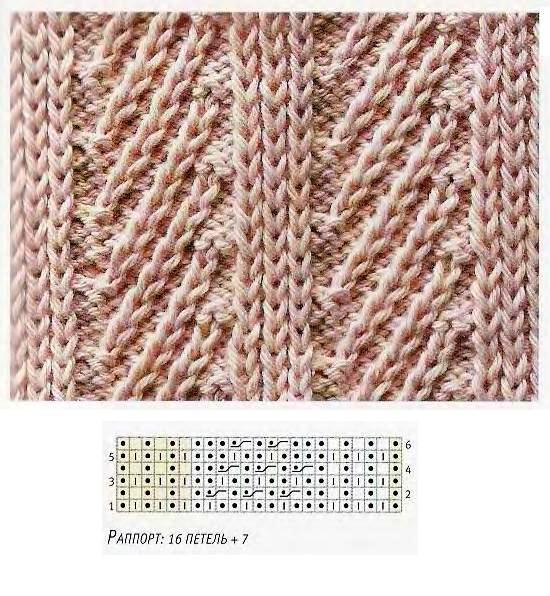
Ovals from the removed loops. Removal of loops in back ranks under the crossed loops allows to create the graceful bends imitating oval plaits.
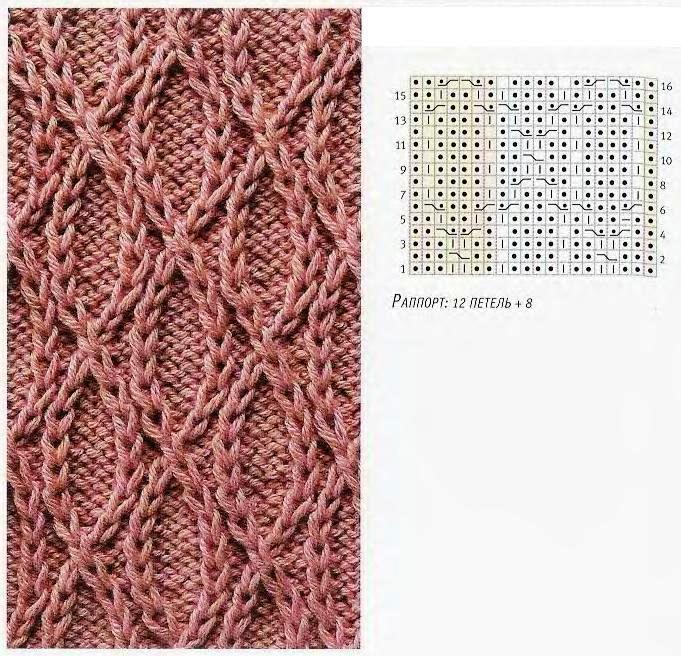
Pattern oak leaf. The motive basis oak leaf is made by the diagonals from the removed loops executed in the refined textured form from front and back loops.
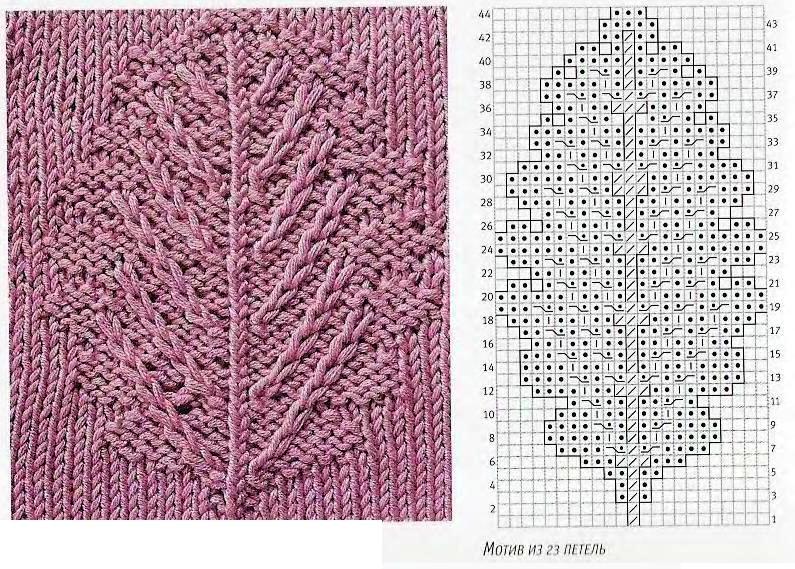
Motive with hand bell. Of course, actually you will not be able to execute loop across! You should embroider two chains of loops necessary for end of bend in upper part of stalk of flower when you finish knitting of motive. To execute other part of motive surprisingly simply.
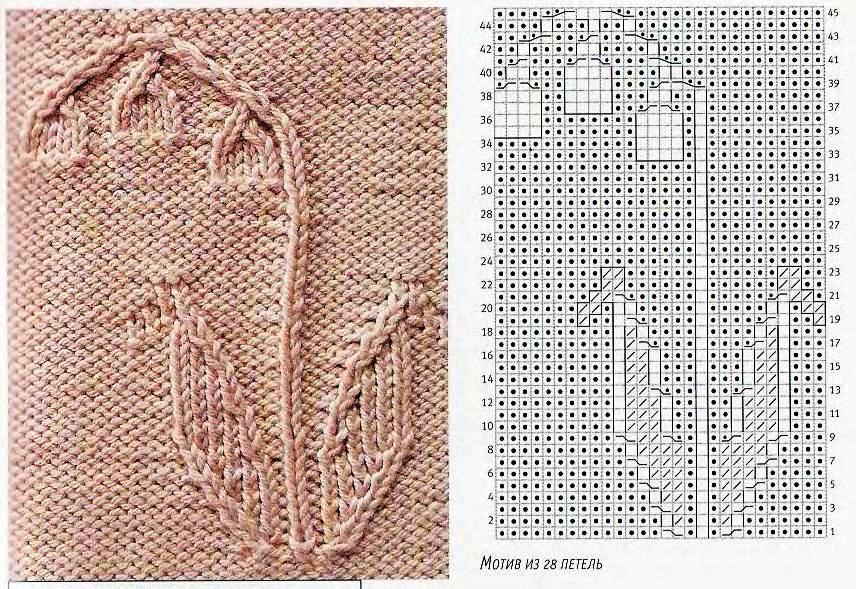
The branching leaves. You will find out that the rapport from 20 rows is rather simple in performance, even in spite of the fact that it is necessary to watch crossing of loops in back ranks.
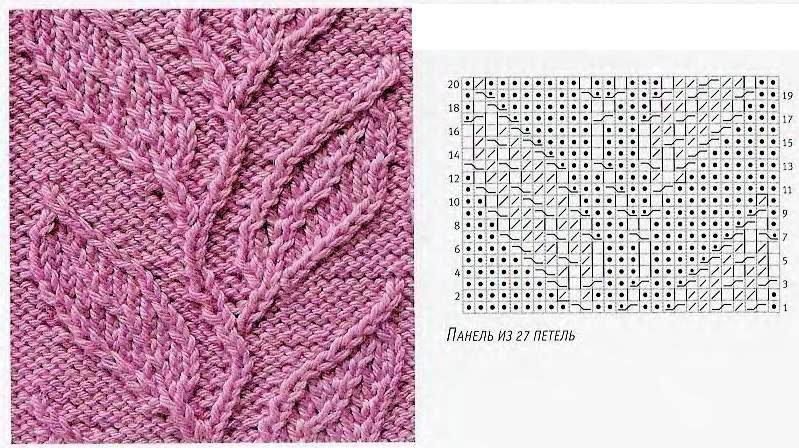
No comments:
Post a Comment